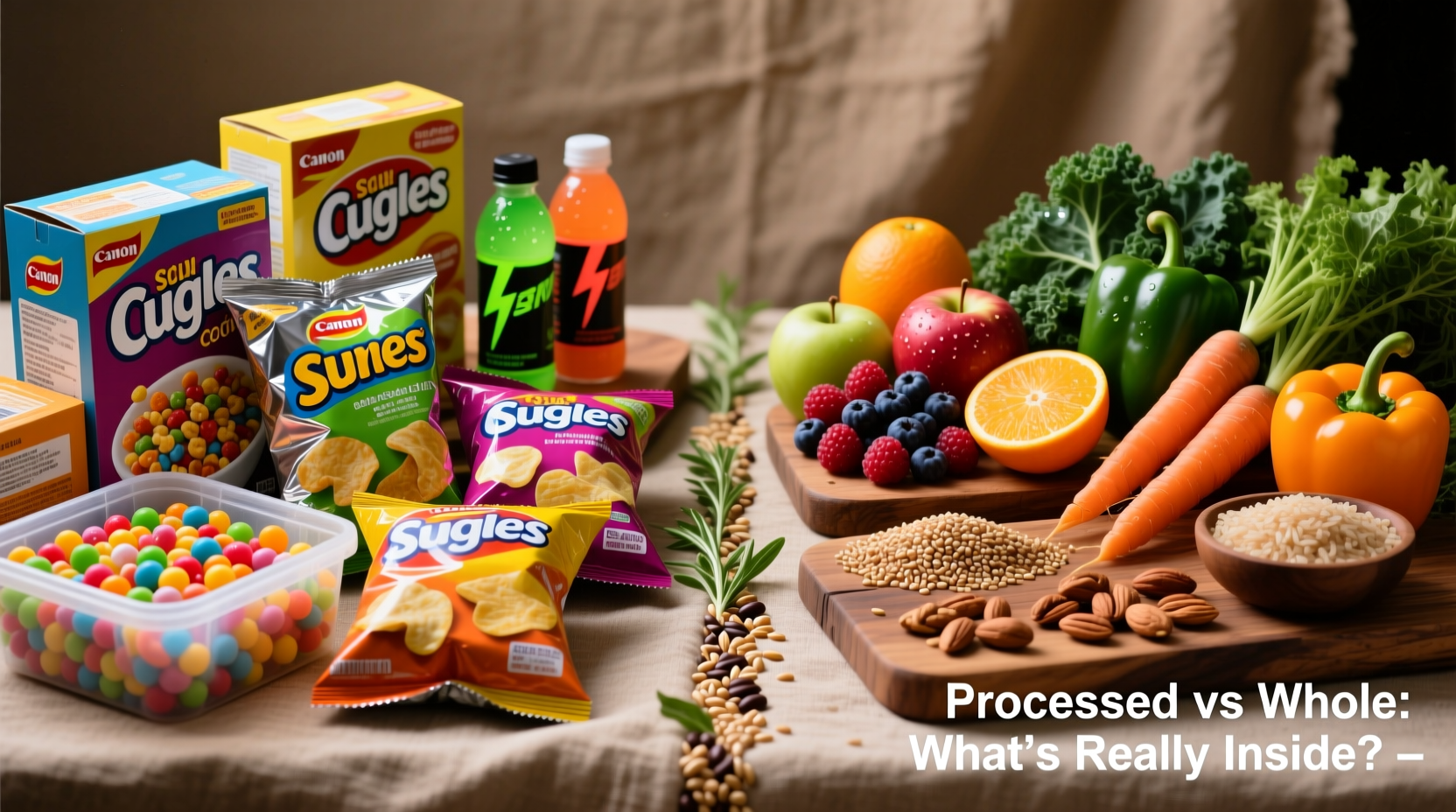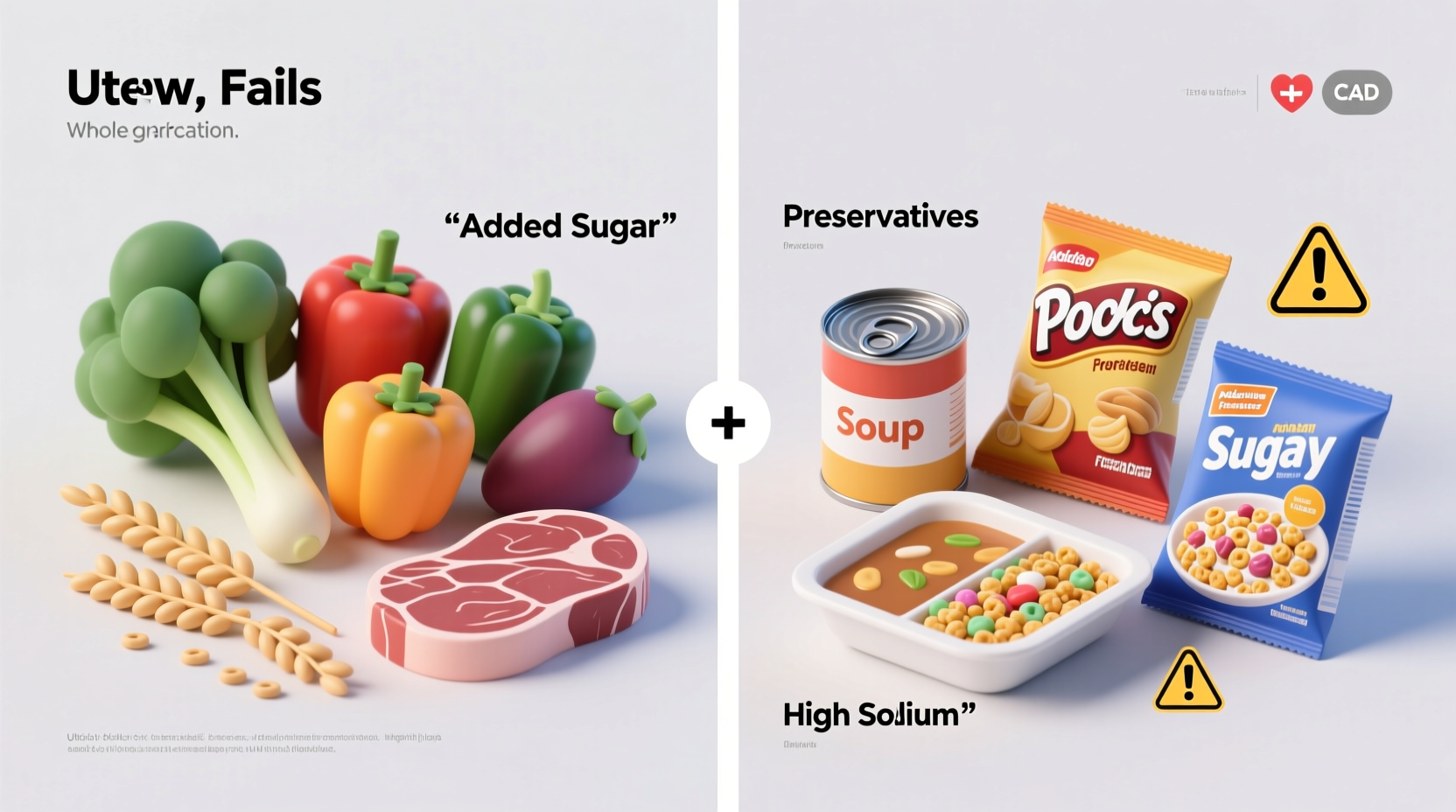When you search what are processed foods, you're likely trying to cut through conflicting information and understand what actually counts as processed food in your daily diet. This guide cuts through the confusion with clear definitions, practical examples, and science-based insights to help you make informed choices without unnecessary fear or restriction.
Demystifying Food Processing: It's Not What You Think
Many people hear "processed food" and immediately picture neon-colored snacks and artificial ingredients. The reality is far more nuanced. Food processing simply means any deliberate change in a food's natural state. This includes basic actions like washing, cutting, cooking, or freezing.
"Processing has been part of human food preparation for thousands of years," explains Dr. Carlos Monteiro, lead researcher of the NOVA food classification system. "The key isn't whether food is processed, but how much and what's added during processing."
The Processing Spectrum: From Farm to Table
Understanding processed foods requires recognizing there's a spectrum of processing, not a simple binary of "processed" versus "unprocessed." The widely accepted NOVA classification system divides foods into four groups based on processing level:
| Processing Level | What It Means | Common Examples | Typical Additives |
|---|---|---|---|
| Unprocessed/Minimally Processed | Natural foods altered by washing, peeling, cutting, freezing, or pasteurizing | Fresh fruits, vegetables, eggs, milk, dried beans, roasted coffee | None or minimal (salt, oil, sugar in small amounts) |
| Processed Culinary Ingredients | Substances extracted from whole foods for cooking | Salt, sugar, honey, vegetable oils, butter, vinegar | N/A (these are the additives themselves) |
| Processed Foods | Simple products made by adding culinary ingredients to minimally processed foods | Canned vegetables, fruits in syrup, cheese, freshly made bread | Salt, sugar, oil (usually 2-3 ingredients) |
| Ultra-Processed Foods | Industrial formulations with little whole food content | Soda, packaged snacks, instant noodles, frozen meals, reconstituted meats | Emulsifiers, colors, flavors, preservatives, sweeteners (5+ ingredients) |
Food Processing Through Time: A Historical Perspective
Food processing isn't a modern invention—it's been essential to human survival and development. Understanding this timeline helps contextualize today's concerns:
- Prehistoric Era: Early humans discovered fire, enabling cooking which made food safer and more digestible
- Ancient Civilizations: Developed fermentation (for bread, cheese, wine), drying, and salting for preservation
- 19th Century: Invention of canning (1809) and pasteurization (1864) revolutionized food safety
- Early 20th Century: Refrigeration and freezing technologies expanded food access
- Post-WWII: Rise of convenience foods with longer shelf lives and standardized flavors
- 1980s-Present: Growth of ultra-processed foods with sophisticated engineering and marketing
According to research published in Public Health Nutrition, ultra-processed foods now account for nearly 60% of daily calories in the average American diet, up from about 55% in the early 2000s. This shift correlates with rising rates of obesity and diet-related diseases, though correlation doesn't equal causation.

Why Processing Matters: Benefits and Concerns
Not all processing is problematic. In fact, many processing methods provide significant benefits:
Benefits of Food Processing
- Food Safety: Pasteurization eliminates harmful bacteria in milk and juice
- Nutrient Preservation: Freezing locks in nutrients shortly after harvest
- Reduced Food Waste: Canning and freezing extend shelf life significantly
- Nutrient Enhancement: Fortification adds essential nutrients like folic acid to flour
- Accessibility: Processing makes foods available year-round and in diverse locations
Concerns with Ultra-Processing
While minimal processing generally preserves food's nutritional integrity, ultra-processing raises legitimate concerns:
- Nutrient Displacement: Ultra-processed foods often replace whole foods in the diet
- Additive Accumulation: Multiple additives in various products may have cumulative effects
- Digestive Impact: Highly processed carbohydrates may affect gut microbiome diversity
- Overconsumption: Engineered palatability can override natural satiety signals
The World Health Organization notes that while no single food causes obesity, diets high in ultra-processed foods tend to be higher in calories, sugar, unhealthy fats, and sodium while being lower in fiber and essential nutrients.
Practical Identification: How to Spot Processed Foods
Instead of fearing all processed foods, develop practical skills to identify what you're consuming:
Reading Labels Effectively
- Ingredient List Length: Generally, fewer ingredients indicate less processing
- Recognizable Ingredients: Can you picture making this food yourself with these ingredients?
- Added Sugars: Check for multiple sugar aliases (sucrose, high-fructose corn syrup, cane juice)
- Unfamiliar Additives: Look for emulsifiers, artificial colors, and preservatives
Context Matters: When Processing Is Beneficial
Not all processing should be avoided. Consider these beneficial processing examples:
- Canned tomatoes: Lycopene becomes more bioavailable through processing
- Frozen vegetables: Often frozen at peak ripeness, preserving nutrients
- Fermented foods: Processing creates beneficial probiotics in yogurt and sauerkraut
- Fortified foods: Vitamin D added to milk addresses common deficiencies
Making Informed Choices: A Balanced Approach
Complete elimination of processed foods isn't necessary or realistic for most people. Instead, focus on balance and awareness:
Practical Strategies for Healthier Choices
- Focus on proportion: Make minimally processed foods the majority of your diet
- Upgrade convenience: Choose frozen vegetables over canned with added sauce
- Read between the lines: "All natural" doesn't mean minimally processed
- Batch cooking: Prepare and freeze your own meals to avoid ultra-processed options
- Smart substitutions: Replace sugary cereals with oatmeal you customize
Registered dietitians recommend following the "80/20 rule"—aim for 80% of your diet to be whole or minimally processed foods, leaving room for enjoyment of other foods without guilt. This sustainable approach avoids the restriction mindset that often leads to yo-yo dieting.
Frequently Asked Questions
Are all processed foods unhealthy?
No, not all processed foods are unhealthy. Minimally processed foods like frozen vegetables, canned beans, and plain yogurt retain most of their nutritional value and can be healthy diet components. The concern primarily applies to ultra-processed foods with multiple additives, high sugar/fat/sodium content, and low nutritional value.
How can I identify ultra-processed foods?
Ultra-processed foods typically have long ingredient lists with unrecognizable components like emulsifiers, artificial colors, and preservatives. They're usually packaged in bright wrappers, require little preparation, and contain multiple added sugars, fats, or sodium. If the food wouldn't spoil quickly at room temperature or looks/smells/tastes artificially enhanced, it's likely ultra-processed.
Is canned food considered processed?
Yes, canned food is processed, but generally falls into the "processed foods" category rather than ultra-processed. Canning preserves food through heat treatment in sealed containers. Plain canned vegetables, beans, or fruits in their own juice are minimally processed options. Be cautious of canned foods with added sauces, sugars, or salt, which move them toward ultra-processed status.
Does cooking count as food processing?
Yes, cooking is a form of food processing. In the NOVA classification system, home cooking with whole ingredients creates processed foods (category 3), while commercially prepared ready-to-eat meals often qualify as ultra-processed (category 4). The key difference is that home cooking typically uses recognizable ingredients in their whole form, while industrial processing often uses extracted components and additives.
Are organic processed foods healthier?
Organic labeling refers to how ingredients are grown, not how much processing occurs. An organic cookie is still ultra-processed if it contains multiple additives, refined sugars, and engineered textures. While organic options avoid synthetic pesticides and GMOs, they can still be high in calories, sugar, and fat. Focus on the processing level and nutritional profile rather than just the organic label.











 浙公网安备
33010002000092号
浙公网安备
33010002000092号 浙B2-20120091-4
浙B2-20120091-4